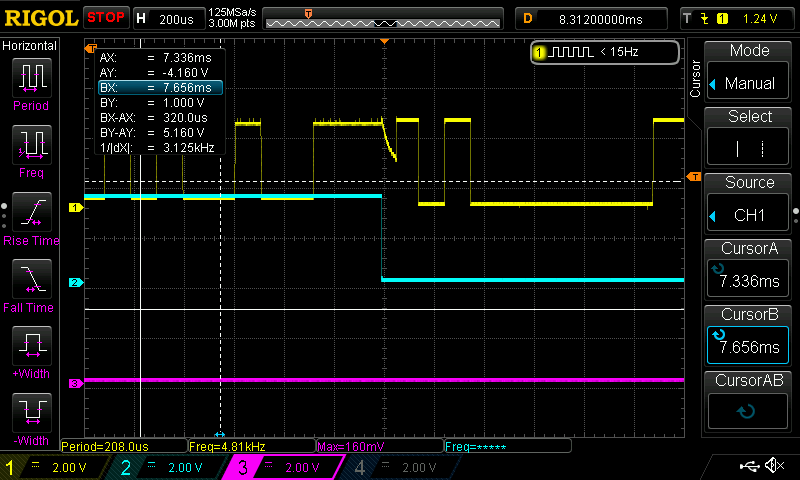Hi,
I'm using in my design mentioned RS485 transciever. I control RE, DE individually (not connected together or so). I measured with scope RX, TX lines from CPU to transciever + A,B lines and analyze data.
E.g. I'm sending those bytes (measured on CPU side):
sending 01 02 00 00 00 04 79 c9
and can see same on A/B signals (when translated)
But then I should receive:
received 01 02 01 01 60 48
And those bytes are available on A/B lines but then on RX side on CPU I got same buffer as sent: 01 02 00 00 00 04 79 c9 which puzzles me and I'm not sure what can cause that.
Any ideas what I can do wrong? I keep DE active in 1 only during transmission (during reception it's set to 0) and RE is still at 0.
Thanks.
marek


